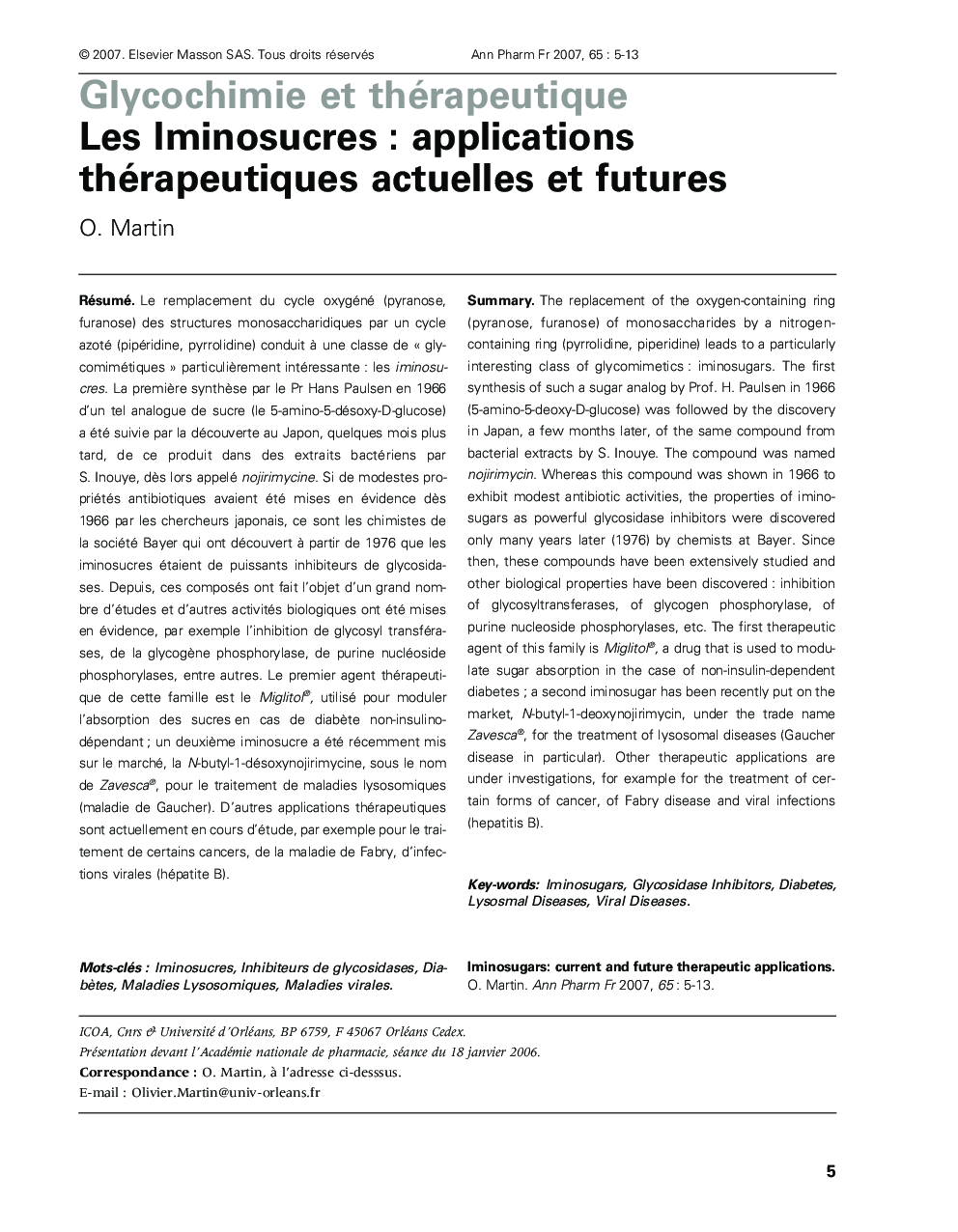| Article ID | Journal | Published Year | Pages | File Type |
|---|---|---|---|---|
| 2478540 | Annales Pharmaceutiques Françaises | 2007 | 9 Pages |
Abstract
The replacement of the oxygen-containing ring (pyranose, furanose) of monosaccharides by a nitrogen-containing ring (pyrrolidine, piperidine) leads to a particularly interesting class of glycomimetics : iminosugars. The first synthesis of such a sugar analog by Prof. H. Paulsen in 1966 (5-amino-5-deoxy-D-glucose) was followed by the discovery in Japan, a few months later, of the same compound from bacterial extracts by S. Inouye. The compound was named nojirimycin. Whereas this compound was shown in 1966 to exhibit modest antibiotic activities, the properties of iminosugars as powerful glycosidase inhibitors were discovered only many years later (1976) by chemists at Bayer. Since then, these compounds have been extensively studied and other biological properties have been discovered : inhibition of glycosyltransferases, of glycogen phosphorylase, of purine nucleoside phosphorylases, etc. The first therapeutic agent of this family is Miglitol®, a drug that is used to modulate sugar absorption in the case of non-insulin-dependent diabetes ; a second iminosugar has been recently put on the market, N-butyl-1-deoxynojirimycin, under the trade name Zavesca®, for the treatment of lysosomal diseases (Gaucher disease in particular). Other therapeutic applications are under investigations, for example for the treatment of certain forms of cancer, of Fabry disease and viral infections (hepatitis B).
Related Topics
Health Sciences
Pharmacology, Toxicology and Pharmaceutical Science
Drug Discovery
Authors
O. Martin,
